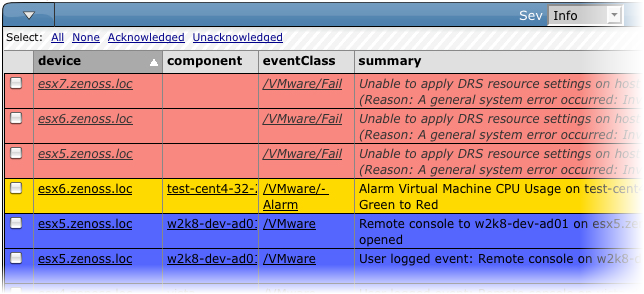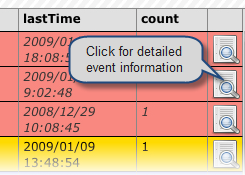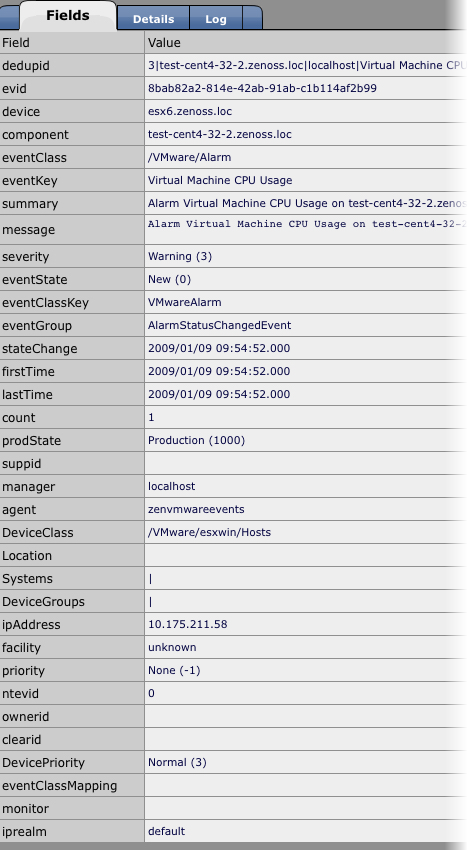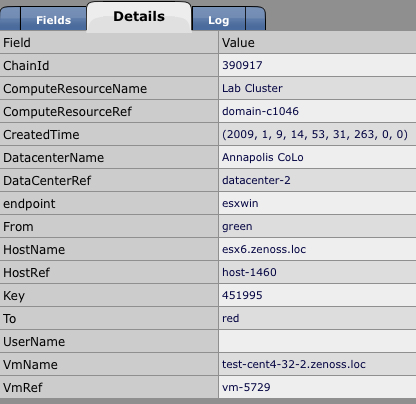With Zenoss, you can collect information to monitor your VMware infrastructure. By entering a single set of connection parameters, you allow Zenoss to:
Obtain the names and properties of various entities in your VMware infrastructure
Monitor metrics collected by VMware
Retrieve VMware events
Zenoss extracts VMware information through the VMware Infrastructure (VI) SDK, VMware's SOAP interface to its line of server virtualization products. The SDK can be accessed from an individual ESX server or vCenter Server (previously, VirtualCenter Server) instance, which can return information about many ESX servers.
For more information about VMware infrastructure, see VMware's Introduction to VMware Infrastructure
VMware records a wide range of events that are available through the VI SDK. Zenoss extracts these events and makes them available in the event console.
The device column shows the ID of the VMware entity with which the event is associated, unless the event is specific to a guest VM. In that case, the device column shows the ID of the host, and the component column displays the ID of the guest.
Zenoss maps the VMware event to the event class and assigns the event a severity level. The event class appears in the eventClass column.
To see detailed event information and the original VMware event type, click the magnifying glass that appears at the end of the event row.
The VMware event type is the value shown for eventGroup.
The Details tab shows additional "raw" content from the VMware event.
When a VMotion guest migrates from one host to another, VMware records events to signal its progress. When a VmMigrated event occurs, it is duplicated to become two events, which are mapped to the /VMware/Migration event class in Zenoss. One event contains the originating host as the device; the other lists the destination host as the device.
An Event Command (see the Commands tab on the Event Manager page) reacts to these events by remodeling the two hosts and generating an updated view of the guests. The time required to produce updated guest lists (from the time migration completes) is between 30 seconds and four minutes.




